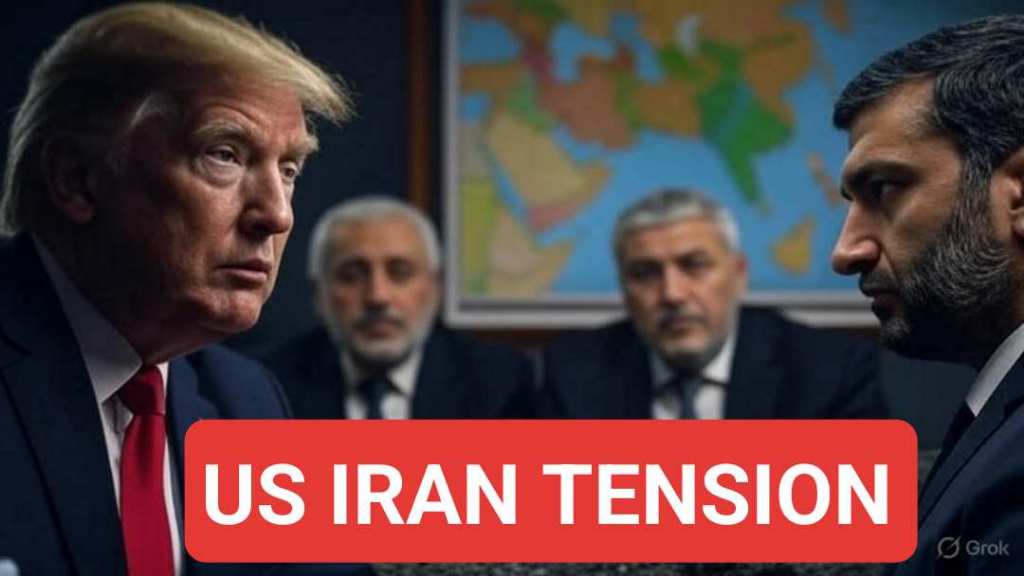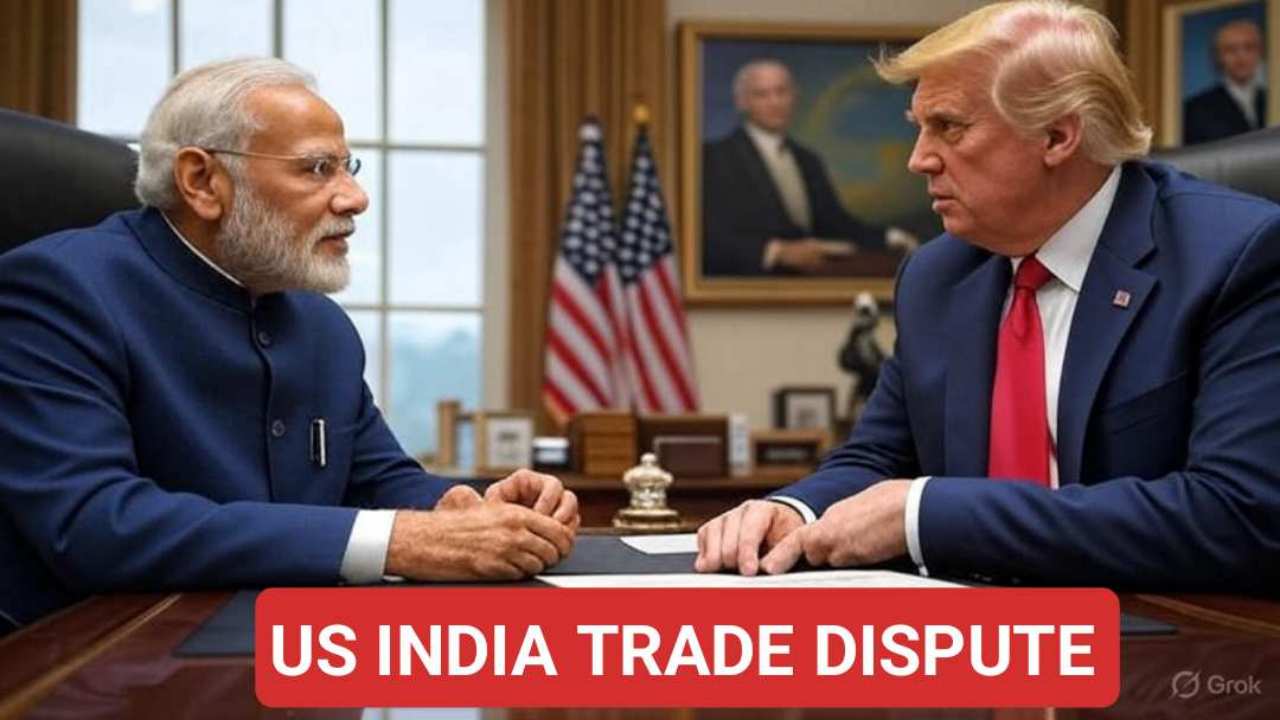US Iran Latest Conflict : In mid-2025, the longstanding tensions between the United States and Iran have reached a critical juncture, marked by a brief but intense military conflict, a shaky ceasefire, and faltering diplomatic efforts.
The latest escalation, centered around Israeli and U.S. strikes on Iran’s nuclear facilities, has brought the two nations to the brink of broader conflict, with global implications for energy markets, regional stability, and nuclear proliferation. This article explores the recent developments, their consequences, and the precarious path forward.
US Iran Latest Conflict : June 2025 Attack
US Iran Latest Conflict erupted in June 2025, when Israel launched a surprise offensive against Iran’s military, nuclear, and civilian infrastructure, killing at least 935 people. The strikes, which targeted key sites like Fordow, Natanz, and Isfahan, were followed by U.S. military action against the same nuclear facilities.
President Donald Trump, in his second term, described the U.S. strikes as “very successful,” claiming they significantly set back Iran’s nuclear ambitions. The attacks came just days before planned nuclear talks between Tehran and Washington, derailing a potential diplomatic breakthrough.
Iran retaliated with 14 missiles targeting Israeli military centers and a symbolic strike on a U.S. military base in Qatar, for which it provided advance warning to Qatari authorities. The tit-for-tat exchanges culminated in a ceasefire brokered on June 24, 2025, but mutual accusations of violations have kept tensions high. Iran’s Foreign Minister Abbas Araghchi accused Israel and the U.S. of undermining peace, while Iran’s Supreme Leader Ayatollah Ali Khamenei warned of severe retaliation, including the potential closure of the Strait of Hormuz, a critical global oil chokepoint.
Iran’s Nuclear Program: Crippled but Resilient?
The U.S. and Israeli strikes have undeniably damaged Iran’s nuclear infrastructure. Fordow, Natanz, and Isfahan—key sites for uranium enrichment—suffered significant destruction. However, analysts suggest Iran may retain a hidden stockpile of enriched uranium, potentially allowing it to rebuild its nuclear capabilities within months.
President Masoud Pezeshkian, while expressing openness to dialogue with the U.S., has emphasized Iran’s resolve to maintain its nuclear program as a matter of national sovereignty. Araghchi reiterated this stance, telling the BBC that talks cannot resume unless the U.S. rules out further military action.
The international response has been mixed. The BRICS+ nations, including Russia and China, condemned the strikes and called for accountability at the United Nations. However, neither Moscow nor Beijing has provided direct military support to Iran, highlighting the limits of their alliances.
Intriguingly, Russian President Vladimir Putin has reportedly endorsed a nuclear deal that would prevent Iran from enriching uranium, a shift from Russia’s previous public position.
Diplomatic Stalemate and Domestic Repression
The June attacks have all but frozen U.S.-Iran diplomacy. The Trump administration has signaled a willingness to resume talks, with officials emphasizing that regime change is not the goal. However, Iran’s leadership remains skeptical, viewing the strikes as evidence of U.S. and Israeli hostility.
Social media platforms like X have been abuzz with speculation, including unverified claims that Trump is considering a new Iran deal potentially involving $30 billion in economic incentives. Such rumors underscore the uncertainty surrounding diplomatic prospects.
Within Iran, the conflict has intensified domestic repression. The bombing of Evin Prison on June 23, 2025, during the Israeli strikes, drew international condemnation and highlighted the regime’s harsh treatment of political prisoners. Reports from opposition groups, such as the People’s Mojahedin Organization of Iran (PMOI/MEK), indicate a surge in executions and deteriorating conditions for dissidents.
Public exhibitions by Iranian opposition groups in Europe and the U.S. have sought to draw attention to these human rights abuses, further complicating Iran’s international standing.
Regional and Global Impacts
The U.S.-Iran tensions have reverberated across the Middle East and beyond. Israel’s role in initiating the June conflict has fueled debates about its influence on U.S. foreign policy, with some X users arguing that Washington’s involvement was driven by Israeli interests. Iran’s threats to close the Strait of Hormuz, through which 20% of the world’s oil flows, have raised fears of economic disruption. While Iran claims its missile arsenal was depleted by the conflict, officials assert they can sustain daily strikes for two years, signaling a readiness for prolonged confrontation.
The lack of direct support from Russia and China has left Iran diplomatically isolated, even as it seeks to rally BRICS+ nations against Western aggression.
Meanwhile, the U.S. faces pressure to balance its hardline stance with diplomatic overtures, particularly as global powers like Russia advocate for a nuclear deal. The ceasefire, while holding for now, remains fragile, with both sides posturing for leverage in any future negotiations.
Root of Discord : Iranian Nuclear sites
As of July 13, 2025, the U.S.-Iran relationship is at a crossroads. The ceasefire has prevented a full-scale war, but the underlying issues—Iran’s nuclear ambitions, U.S. and Israeli security concerns, and regional power dynamics—remain unresolved. For diplomacy to succeed, both sides will need to make concessions: Iran must address concerns about its nuclear program, while the U.S. must provide assurances against further military action.
The human cost of the conflict, both in terms of lives lost and the worsening repression in Iran, underscores the urgency of a resolution. Yet, with hardliners on both sides and a volatile regional environment, the prospects for a lasting agreement remain uncertain.
As the world watches, the U.S. and Iran must navigate a delicate balance between deterrence and dialogue to avoid plunging the region into further chaos.









